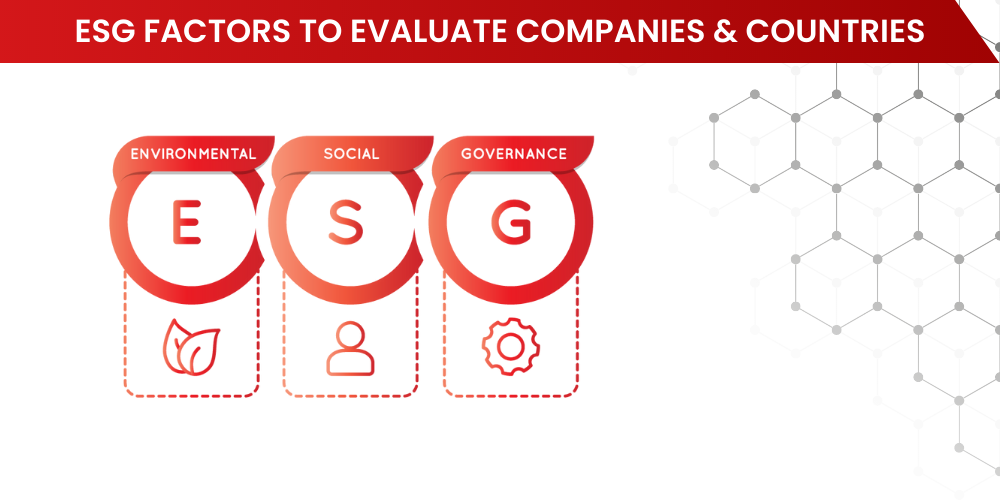Sustainable development continues to be a top priority for businesses since its inception and is attracting greater emphasis year on year from organizations around the world. Sustainability, which was once thought of as "doing the right things", often represented by a volunteer-organized committee, today has its presence on the companys’ reports along with the financial data and has a direct impact on the value creation. ESG (Environmental, Social, and Governance) factors would be the basis of such reports and disclosures to evaluate companies and countries on how advanced and prepared they are for sustainability. Once enough data points have been acquired on these three metrics, they can be integrated into investment and decision-making processes, broadly called responsible investing.

The history of ESG investing
The concept of ESG investing began in January 2004 with a report titled "Who Cares Wins," initiated by UN Secretary, that highlighted; embedding ESG factors in capital markets makes good business sense and leads to better sustainable outcomes for societies. During the same time, the UN Environment Programme Finance Initiative (UNEP/Fi) produced the ‘Freshfield Report’, which showed that ESG issues are also relevant for financial valuation. These two reports formed the base of the ‘Principles for Responsible Investment (PRI)’ launch in 2006. The steady growth of ESG investing was greatly accelerated around 2013-2014 when the first studies showed that good corporate sustainability performance is associated with good financial results.

The United Nations’ 17 Sustainable Development Goals (SDGs), which are an urgent call for action by all countries in a global partnership, can be viewed through the lens of ESG
The 17 SDGs came into the limelight in September 2015 at the United Nations Sustainable Development Summit, adopting the ‘Agenda for Sustainable Development for 2030’ at its core. The objective was to meet the urgent environmental, political, and economic challenges faced by creating a set of universal goals - known as the sustainable development goals.

The key basis of the SDGs
The SDGs replaced the Millennium Development Goals (MDGs), which started as a global effort in 2000 to tackle the indignity of poverty. The SDGs address specific challenges of the MDGs' by incorporating a broader and transformative agenda. The MDGs are primarily focused on the targets for developing countries with funding from the already developed rich countries. However, the SDGs are for all countries, developed or developing, all of whom are expected to work together to achieve the universal goals and targets.
The SDGs consist of 17 goals and 169 targets. There are 231 unique indicators to track the progress towards these targets. A total of 193 member states of the UN assembly are committed to achieving the SDGs by 2030.

Read More: Skills Required for ServiceNow Developer
How is ESG aligned with SDGs?
All 17 SDGs are interconnected, which means the success in one affects all the others.
- Dealing with the threat of climate change will impact how we manage our fragile natural resources
- Achieving gender equality or better health will help eradicate poverty
- Fostering peace and inclusive societies will reduce inequality and help economies to prosper
In a nutshell, this is the greatest chance we have to improve life for future generations. With a total of 169 specific targets, the SDGs also present a wide range of opportunities for businesses to make a difference. The UN Sustainability Goals can be used to manage ESG reporting and create long-term financial value.
SDGs work together with ESG factors by providing guidelines on how an organization can achieve sustainable development goals within their company, products, and services.

The recent COP26 (Conference of Parties) meeting in Glasgow helped push ESG and SDGs even further into the limelight. As ESG is a rating system used by companies to measure their environmental, social, and governance credentials, this means that the businesses can rate themselves on multiple criteria.
- Environmental footprints – such as greenhouse gas emissions, climate change, waste, energy usage, and more that are briefly covered as part of SDG7 and SDG13
- Social impacts – such as labor standards, health & safety, pay equality, and diversity in the workforce, which are highlighted as SDG5, SDG8, SDG10, and others
- Governance performance – such as accounting practices, transparent operations, and board independence, mentioned primarily in SDG5 and SDG8
As we have noticed, both SDGs and ESGs are highly coherent concepts for resolving environmental, social, and governance issues to attain an ideal sustainable society. The SDGs are unique in the way that they cover issues that affect us all, both as an individual and as organizations. They are ambitious in making sure that we’re all involved together in building a more sustainable, safer, and prosperous planet where everyone can thrive.
%20Help%20Define%20And%20Drive%20ESG%20Outcomes1651819997748.jpg&w=3840&q=75)
